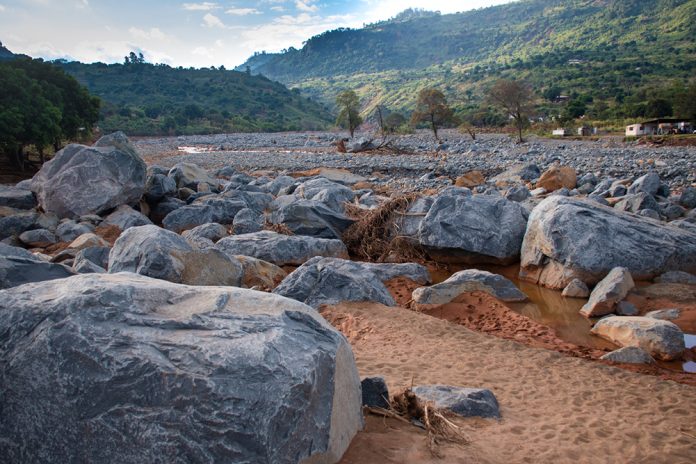Cyclone Idai made landfall near Beira city, Mozambique, on March 14, 2019, as a Category 2 storm. Heavy rains and strong winds led to flash flooding, hundreds of deaths, and massive destruction of property and crops. Mozambique, Zimbabwe, and Malawi were the hardest hit countries with over 2 million people affected by what is the worst natural disaster to hit southern Africa in at least two decades.

In the eastern highlands of Zimbabwe it set off landslides that have altered the landscape. Officials in Zimbabwe estimate that more than 2 250 houses were washed away or damaged, leaving more than 4 000 people displaced. Entire sections of settlements have completely disappeared, with massive rocks where houses had stood. The bodies of their occupants were washed away into Mozambique by the floodwaters.

The government of Zimbabwe was a bit slow on their response despite early warnings that the storm would affect Zimbabwe. Citizens, however, responded to this disaster in a commendable way.

In June we set off on a trip to Ndakopa. And used the Wengezi route. Shortly after we turned at the Wengezi turnoff, from the Mutare Masvingo highway we started seeing signs of the effects of the storm. Rivers that showed they had flooded their banks and bridges that had been washed away.

This devastation was most acute when we came up to the Nyahode river which burst its banks and flooded the Rusitu Valley where it met with the Rusitu river. A whole community was swept away overnight.

Rescue missions were carried out by the army to rescue people who had come to higher ground. That fateful night members of the community we talked to recounted the scenes that played out. Screams were heard in the night as people were stranded and as the water rose they were swept away. Some found refuge at the local police station but as the storm raged on the police station and all its inhabitants were swept away!

There were a few abnormalities about this storm as the community had never experienced such! The winds were heard from afar and roared up the valley in a swirl of heavy rain. All we spoke to agreed that there were two main swellings of water that swept down the valley. The first wave came and people climbed trees to escape, some were rescued at this time, but the second wave came and washed those trees away too. There were explosions that were heard during the storm. Accounts also suggest that water was also exploding from underground!
At one stage the water that was coming out was hot!

Sadly aide that was meant for the victims became a political tool and didn’t reach the intended recipients. Some donors were turned away because they didn’t follow the set ‘protocol‘. When children finally went back to school they were still traumatised by the events as many had lost friends and family.

The community at Ndakopa were told to leave the area and relocate to a safer area but there was no plan for their relocation. Up to today over nine months after the storm the community feel they have been neglected and those in temporary shelters are still there with no plan to get them alternative accommodation. There were many social media campaigns to assist schools to rebuild, and to cloth the affected, but the governments readiness for such a disaster left a lot to be desired.

Oddly enough one question I wanted to know about, came with the same answer each time. Would you have moved if the government had warned that they needed to evacuate the area because of a pending storm? They all answered in the negative. “We are used to such storms, some which you would find odd, we find normal here in Rusitu valley. We would not have believed it could be any different. But this was something we have never witnessed before! “ What made the situation much worse was the fact that this happened in the dead of night and the rapid rising of the waters surprised many hence many were caught unawares as water gushed into homes. Most bodies were washed away into Mozambique never to be seen or retrieved with people unable to bury their family members.

Now the rainy season is upon us again and people are still vulnerable to the elements. The huge boulders have effectively changed the course of the Nyahode river.























